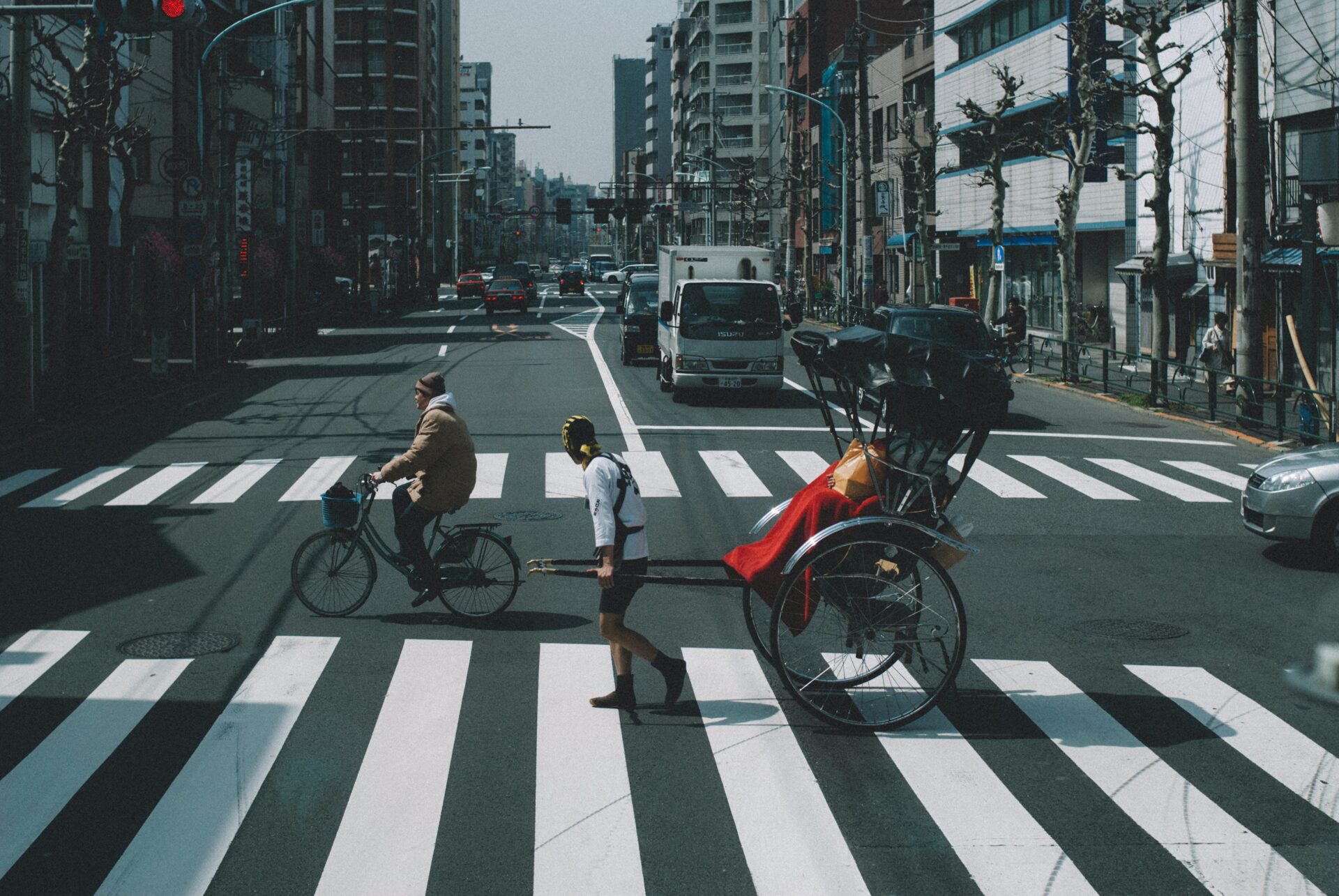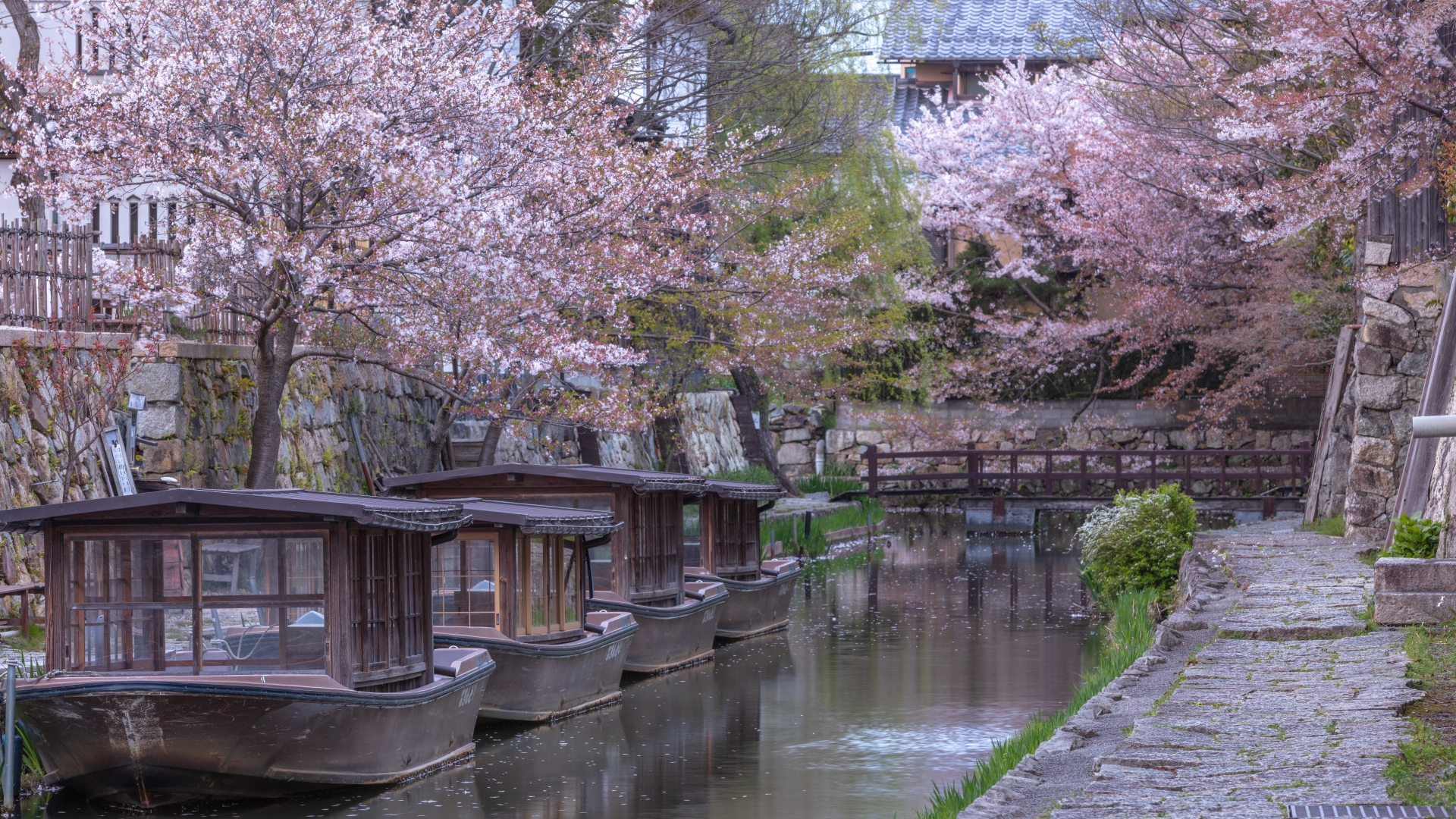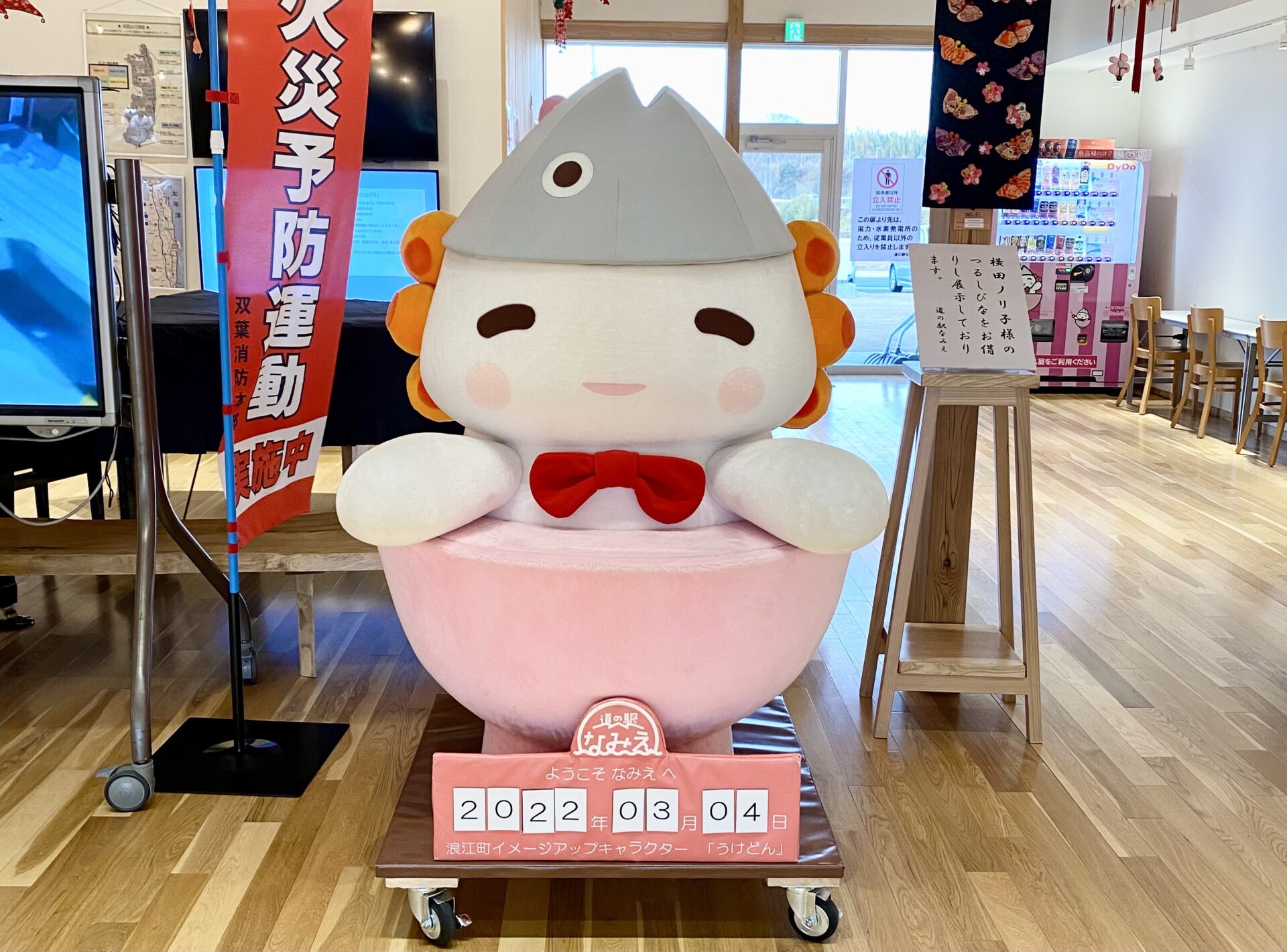Tokyo is one of the largest cities in the world and it boasts one of the most ingenious public transportation systems in the world. If you don’t mind taking a walk, the metropolis is also very pedestrian-friendly and you can see quite a lot in one day on foot if you plan the day well. But with so many ways to get around in Tokyo, let’s have a look at which alternatives there are for hoofing it!
Luup
One of the newest additions to Tokyo’s transportation arsenal is the electric scooter system called Luup. It seems to be gaining popularity quickly, especially among Tokyo’s 20- and 30-somethings. The scooters go up to 15 km/h and are used like bicycles, so you have to use the bicycle lane or the side of the road instead of the sidewalk. There are many pickup/dropoff points all over central Tokyo, and you can conveniently check the app to see where Luup scooters are still available near you. At the moment, the app is only available in Japanese, but this may change if the system turns out to be a success. They also rent out electric bicycles with the same system, so if they are out of scooters or if you want to go slightly longer distances, you can also opt for a bicycle.
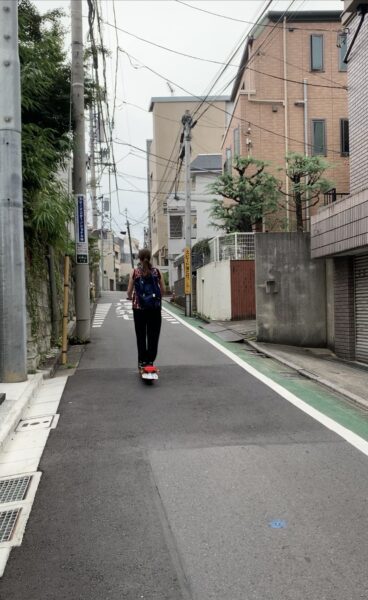
(Electric) Rental Bicycle
Electric bicycles are ubiquitous in Tokyo, and many citizens younger or older like to use them to get around swiftly and without breaking a sweat. There are quite a few bridges and small hills and tunnels in the city, so an electric bicycle makes it a lot easier to get around compared to a pushbike. Tokyo’s summers are notoriously hot and humid as well, so that’s another good reason to get an electric bike. There are many places to rent them around the city, rental shops as well as rental systems. The most convenient rental system is Tokyo Bike Share by Docomo, which has docking portals all over central Tokyo and the nearer suburbs. You can buy a day pass at convenience stores if you only want to use them once, and if you are planning to use them more often you can download their app.
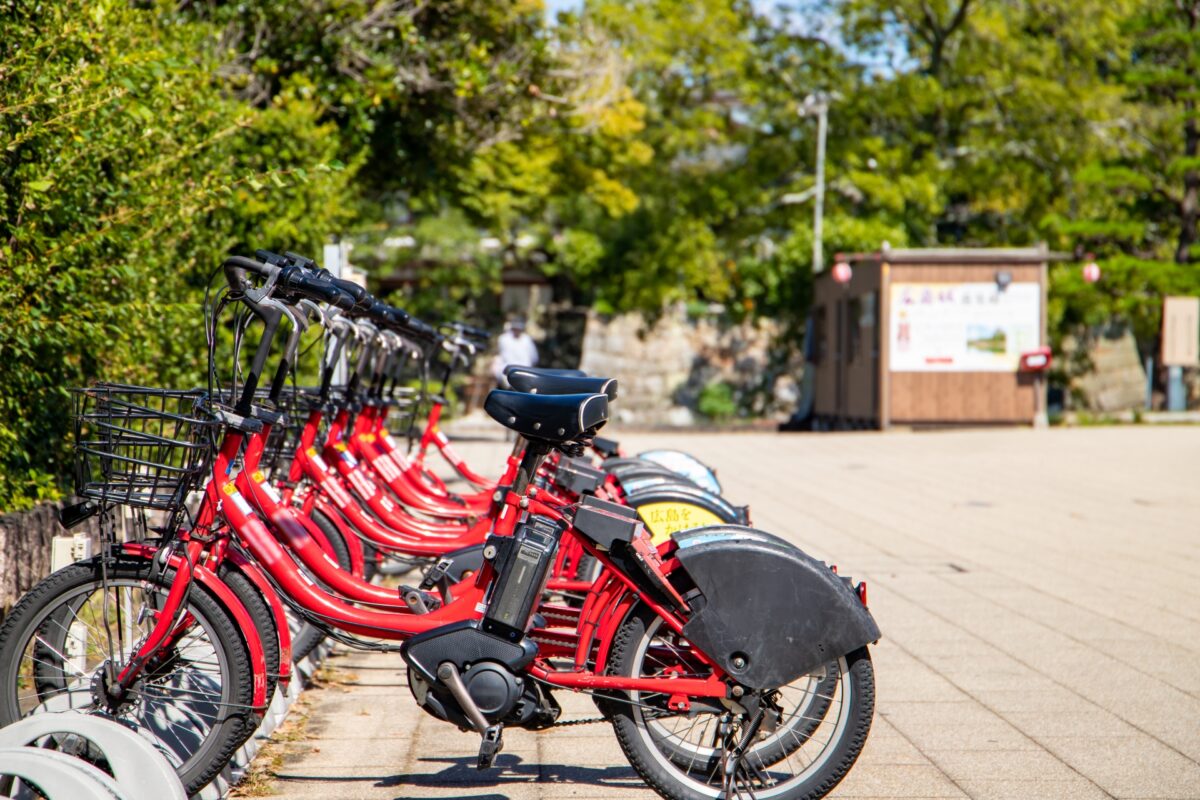
Rickshaw
If you want to spoil yourself a bit, why not take a ride on a pulled rickshaw? Popular tourist areas like Asakusa and Kamakura have fit young men (and sometimes women) waiting for customers who want to see the area from the back of their rickshaw. Of course, the pullers happily share stories about the area while you go around with flair and good humor. Rides takes around 20 minutes, and because the cart is easily maneuvered into the smaller streets, you will get to see the quiet and quaint backstreets that are relatively undiscovered by the throngs of tourists on the main streets.
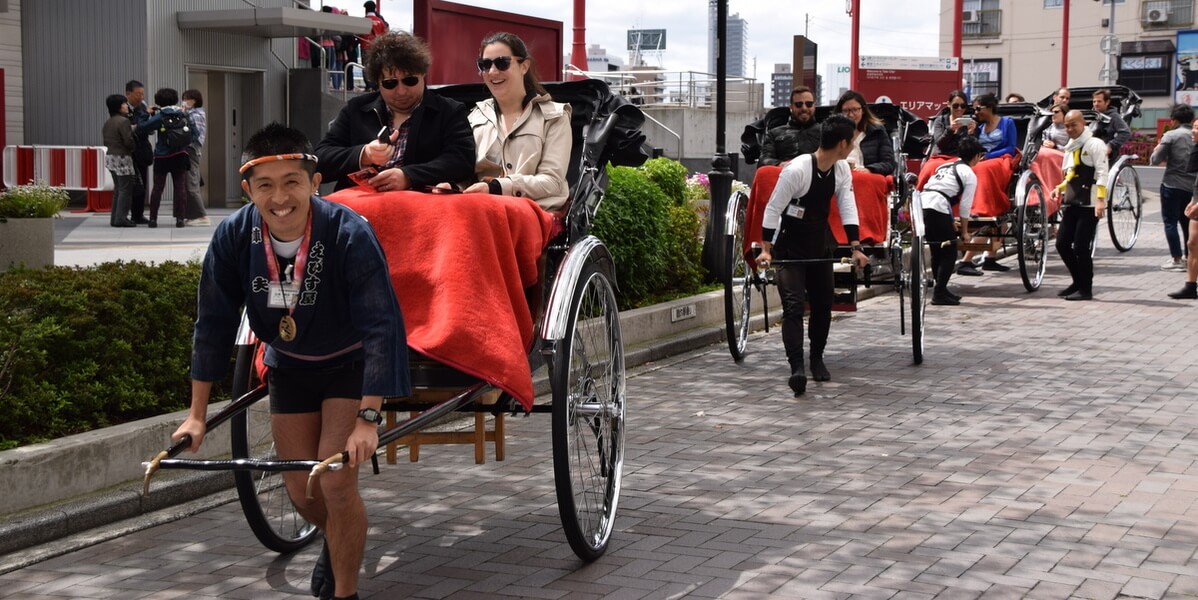
Water Bus
Of course, you can take the subway to get to and from Asakusa, but how about seeing a bit more of Tokyo while on the way from the Water Bus? The boats that go between Asakusa, the Hamarikyu Gardens, Toyosu, and Odaiba don’t just bring you to your destination but also give you the unique opportunity to view Tokyo from the water. You can enjoy a snack or drink that they sell on board, and if you’re lucky you may even get to ride the futuristic-looking Hotaluna boat.
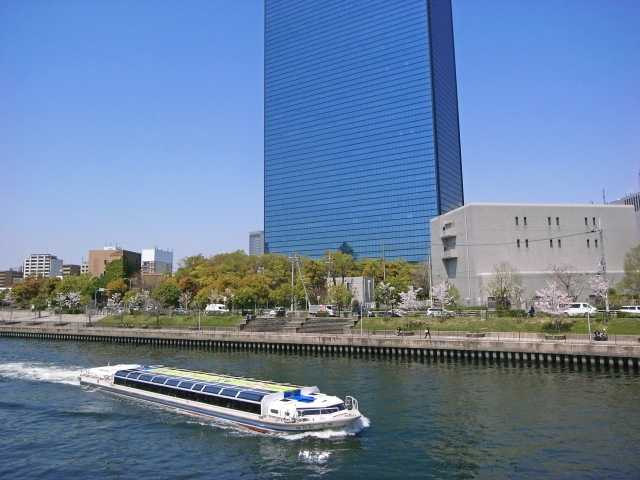
Tram
While trams aren’t as common as they used to be in Japan, there are still a few of them spread around the country. The only tram ride that you can still make in central Tokyo is the Toden Arakawa Line, which is also known as the ‘sakura tram’ for the many cherry blossoms you can see on the way during the season. But it is also worth a ride outside of the cherry blossom season, as you get to see the more local and residential side of Tokyo on the ride that goes from Waseda to Minowabashi. Hopping on and off is strongly recommended if you want to see Tokyo’s more quiet, everyday face. We especially recommend checking out Sugamo which is also famous as Tokyo’s elderly’s answer to young and hip Harajuku.
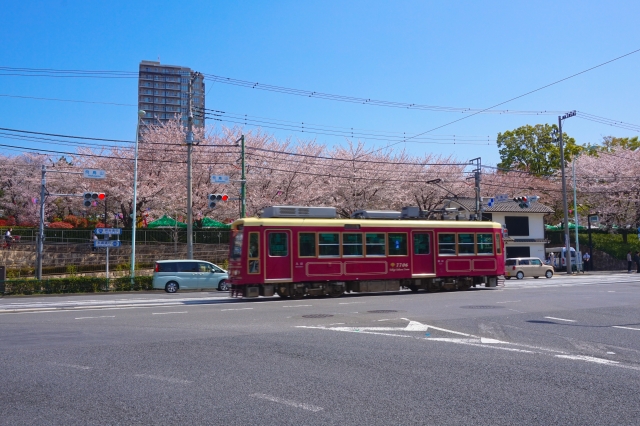
Train and Subway
If you just want to get somewhere cheap and quick and don’t really care much about what you see on the way, then taking the train or subway is the best choice. Tokyo has one of the most efficient and extensive public transportation networks in the world, and there are always multiple ways to get where you need to be in central Tokyo. Buying an IC card upon arrival in Japan is a good idea if you are planning to take the train, subway, or bus anywhere in Japan more than a few times. This way, you will save yourself the effort of having to buy separate tickets for each ride.
If you are taking more than 3 train and/or subway rides in one day, you should get a one-day pass as that will save you a significant amount of money. You can get a pass for either the subway or the JR trains for the best deal, they are both available at ticket vending machines at their respective stations. Here is an overview of public transportation in Japan for more comprehensive handy travel information.
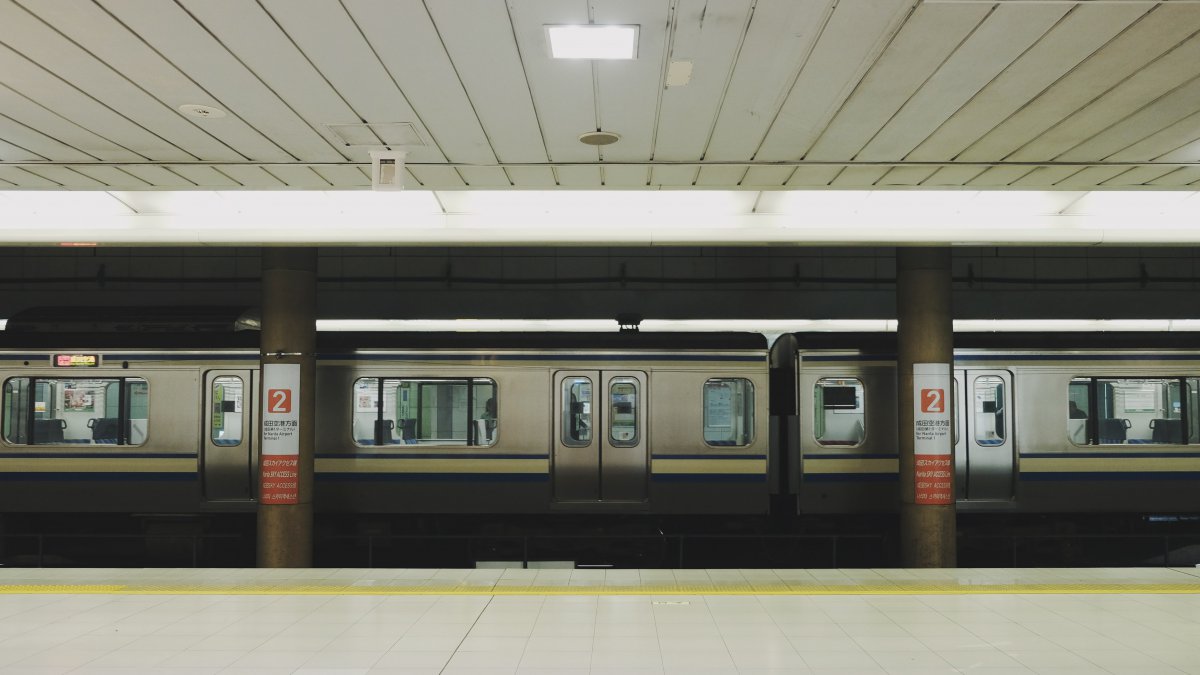
Taxi
Sometimes you just want to get somewhere quickly without having to look at which train to take or how to walk. Or maybe it is raining and you just want to get to your next destination as comfortably as possible. If you don’t mind spending a bit more, taking a taxi can be a great option for rides between ~3-7 km. Compared to many other large cities in the world, taxis in Japan aren’t as expensive as elsewhere, and if you travel with 2 or 3 companions it can sometimes even be cheaper compared to taking the train if you go only a few kilometers. Most taxi drivers don’t speak English, but if you show them the Japanese name of where you want to go on your phone you should have no problems in getting to your destination.
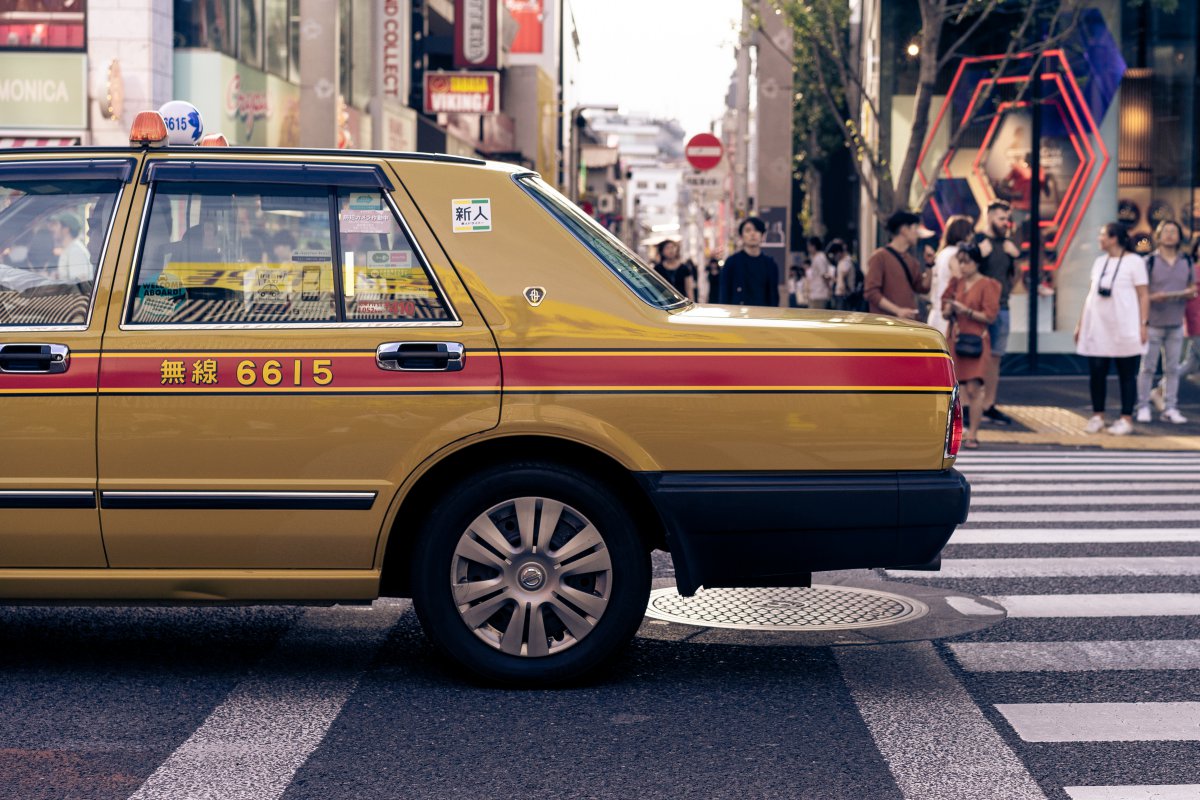
Traveling Around Tokyo
As you see, there are many ways to go from one hot spot in Tokyo to the next. But what if you come to Tokyo for the first time, and you want to just be able to follow a local expert to the best places to see, feel, and experience? In that case, hiring a private guide for one of your first days in the city is a very good idea. We offer many different kinds of tours such as highlight tours, food tours, specialty tours, and day trips just outside of Tokyo. No matter which tour you choose, you can always be sure that we will provide you with an excellent guide who will offer a wealth of knowledge and extra excitement to your day!
Follow us on Instagram, Facebook and Twitter for more travel inspiration. Or tag us to get featured!
Happy traveling!
Other articles you might be interested in

Stefanie Akkerman moved from the Netherlands to Japan in 2013 with her Japanese husband and son. She jumped into the niche of Dutch tour guiding in Tokyo and Kamakura in 2015 and occasionally writes articles about all the great sights and activities Japan has to offer. She loves (Japanese) food, and to work that all off she goes diving, snorkeling, cycling, or hiking.
This post may contain some affiliate links. When you click through and make a purchase we may receive some commission, at no extra cost to you.
